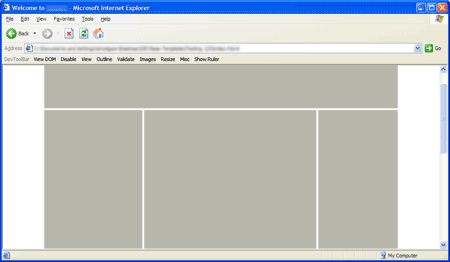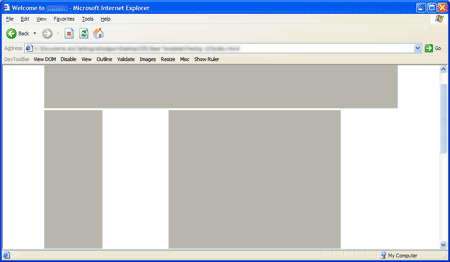In DNN Evoq, there’s a structured content solution called Liquid Content. The visualizers used to put that content on a DNN web page use the Liquid template language (I believe it uses dotliquid under the hood). Here’s a few things that’ve been useful to me:
If statement with a checkbox value
Sometimes my users want to be able to choose whether a link opens in a new tab. So I added a checkbox to the content type. Now, I expected it’d be as simple as {% if {{imgOpenInNewTab}} %}target="_blank"{% endif %}. Sadly it wasn’t.
After quite a lot of fiddling, I discovered I had to use the first filter, like so:
{% if {{imgOpenInNewTab.first}} == 'Yes' %}target="_blank"{% endif %}Working with images
When you want to add an image to the template, add one to your content type and then add it to the template, like so: {{ image }}. It’ll output the entire image tag for you.
But what if you want to do something with the img element? Maybe set your own alt text, or specify other HTML attributes on there. This is where the image_url filter comes in. It returns the URL of the image. You’d use it like this:
<img src="{{ image | images_url }}" alt="" />Working with absolutely massive images
Sometimes the people putting content into the system will upload a 3000px image from somewhere like Unsplash. DNN has the facility to scale images using the DNN Image Handler (and cache them on the server). You’d set the img src to something like /DnnImageHandler.ashx?mode=file&w=700&resizemode=fit&file=path-to-file. How do we use this with Liquid Content? It’s rather tricky, but it can be done, making use of lots of Liquid Template loops, variables and filters:
Firstly, the Image Handler doesn’t work with SVG images, so first we’ll need to figure out if the image is an SVG:
{%- assign file_extension = image | images_url | split: "." | last | split: "?" | first -%}Then we need to get the server-local path to the image, (i.e. strip the https://example.com/ off the front). This is a bit complicated:
{%- assign local_image_url = image | images_url | remove_first: "http://" | remove_first: "https://" | split: "/" -%}Then, pass it to the DNN image handler, stripping off the querystring as we go:
<img src="/DnnImageHandler.ashx?mode=file&w=700&resizemode=fit&file={%- for item in local_image_url -%}{%- unless forloop.first -%}/{%- if forloop.last -%}{%- assign not_qs = item | split: "?" -%}{{ not_qs.first }}{%- else -%}{{item}}{%- endif -%}{%- endunless -%}{%- endfor -%}" alt="" />Finally, sometimes when an image has funny chracters in the filename it ends up as a .aspx URL, so we can’t do this at all. So all in, we end up with this:
{%- assign file_extension = image | images_url | split: "." | last | split: "?" | first -%}
{%- assign local_image_url = image | images_url | remove_first: "http://" | remove_first: "https://" | split: "/" -%}
{%- if file_extension == "svg" -%}
<img src="{{ image | images_url }}" alt="" />
{% elsif file_extension == "aspx" %}
<img src="{{ image | images_url }}" alt="" />
{%- else -%}
<img src="/DnnImageHandler.ashx?mode=file&w=700&resizemode=fit&file={%- for item in local_image_url -%}{%- unless forloop.first -%}/{%- if forloop.last -%}{%- assign not_qs = item | split: "?" -%}{{ not_qs.first }}{%- else -%}{{item}}{%- endif -%}{%- endunless -%}{%- endfor -%}" alt="" />
{%- endif -%}Now that might all seem a bit overkill, but if your content editors are prone to uploading 3000px images from Unsplash, this helps deal with the problem.









